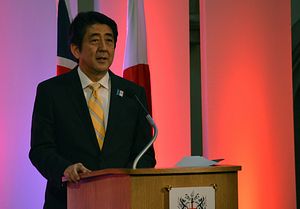There has been quite a bit of Japanese diplomatic activity over the last week. The biggest announcement has been the upcoming visit of Indian Prime Minister Narendra Modi to Japan on July 3 and 4, which given his relationship with Japanese Prime Minister Shinzo Abe, has been highly anticipated since his election last month. Additionally, Philippine President Benigno Aquino will visit Japan on June 24 for a meeting with Abe, in which recent Chinese actions in the South China Sea will likely feature prominently. Going abroad, Japanese Foreign Minister Fumio Kishida is finalizing the details of a planned trip to Ukraine in July, and Abe is also planning a diplomatic tour this summer with a trip through Latin America in late July. The Japanese government appears intent on pushing forward with its foreign policy agenda over the next month.
Modi’s visit will be the most anticipated. Not only do the two leaders share an affinity for each other, their leadership styles, economic policies and nationalist tendencies have much in common. Beyond their similarities, there is much on the table to discuss between the two countries. As my colleague Ankit has pointed out, Abe sees large opportunities in an expanding relationship with India, and trade and cooperation in civil nuclear development are expected to be discussed during their talks. As Japan’s nuclear reactors remain offline, its nuclear power producers are eager to expand further into markets abroad in order to remain profitable. Japanese businesses have generally shown a recent trend toward growth this year, and record Japanese capital expenditures in the first quarter might entice India to open further to FDI.
Aquino’s visit next week will most likely focus on security related issues. His spokeswoman Abigail Valte said tension between the Philippines and China over territorial disputes in the South China Sea will “likely” feature during talks with Abe. The Philippines foreign ministry said, “The meeting is an opportunity for the two leaders to exchange views on recent regional developments and to discuss areas of cooperation to enhance the Philippines-Japan Strategic Partnership.” Japan is currently financing the Philippines’ purchase of 10 Japanese patrol boats for operations in “contested territories in the West Philippine Sea (South China Sea),” as well as providing a grant of 1.15 billion yen for the installation of VSAT and Inmarsat communication systems to the Philippine Coast Guard.
Kishida’s visit to Ukraine will highlight Japan’s complex current relationship with Russia. Although the foreign ministry has yet to announce his itinerary, the Japan News was told Kishida will likely address the 150 billion yen in assistance Japan has pledged to stabilize Ukraine. He will also reinforce the Japanese stance that it does not allow attempts to “change the status quo by force,” a reference to Russia’s annexation of Crimea. Despite Japan’s hope that a natural gas deal, or a resolution over the disputed Kuril Islands/Northern Territories, might be struck with Russia, Japan’s fear of China unilaterally taking jurisdiction over the disputed Senkaku/Diaoyu Islands has prompted it to take a harsher line with Russia in regard to Ukraine than it would otherwise.
Right now, the culmination of this diplomatic offensive will be Abe’s reported visit to Brazil, Chile, Mexico, Trinidad and Tabago, and possibly Peru or Colombia late next month. The government has said the aim of the trip is to secure support for a Japanese nonpermanent member seat on the U.N. Security Council next year. He will also be meeting with two or three of the prospective members of the future Trans-Pacific Partnership, while Mexico and Brazil are important trade and investment partners.
This series of meetings is set to begin as the Abe administration rolls out its final phase of economic structural reforms, in an attempt to keep momentum behind both Japanese economic and international policy. However, the agenda of these visits is heavily skewed toward security matters, with the exception of Modi’s visit (which coincidentally, will occur just before India joins Japan and the U.S. in the Malabar naval exercises in the North Pacific in late July). The Japanese government is showing a concerted effort to garner support amongst its allies in areas where it is likely to encounter friction with China. Shoring up ties with Chinese protagonists like the Philippines and India addresses Japanese concerns in the South China Sea and supply chain issues in the larger Indo-Pacific region, while taking an opposing stance with Russia in Ukraine shows Japanese determination in the East China Sea. A seat on the U.N. Security Council (albeit as a nonpermanent member without veto power) would provide incremental leverage and an additional forum to raise Japanese concerns. These actions will not play out in a vacuum however, and resistance and countermoves from China (especially in the Security Council) should be expected.

































